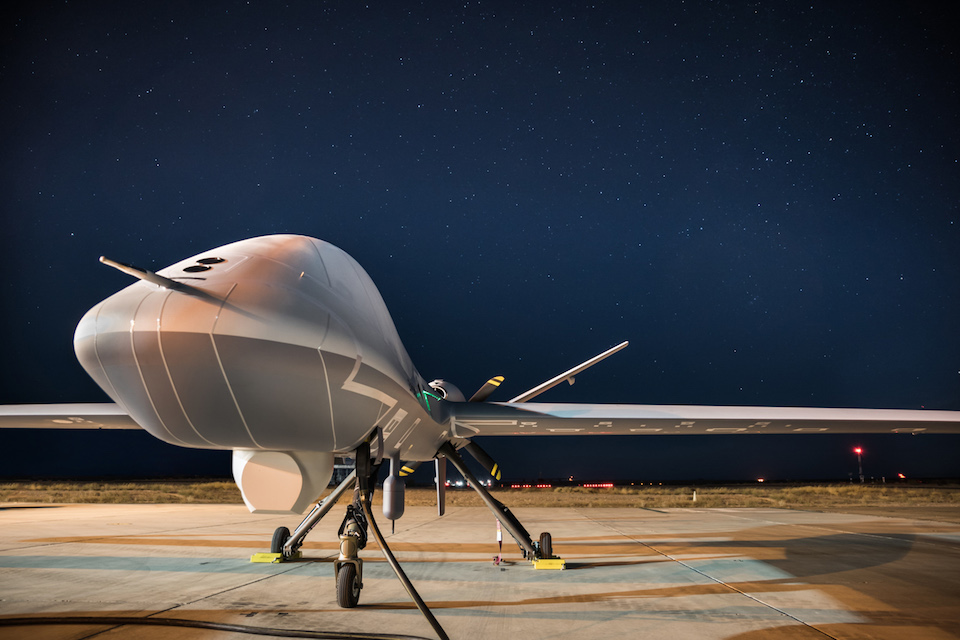News story: Defence Minister announces new prosperity framework between UK and Lockheed Martin
Under a new Prosperity Framework, the UK Government and Lockheed Martin will work together to identify new opportunities to generate value to the UK and to Lockheed Martin. The Framework will work on the creation and exploitation of innovative ideas and technologies; strengthening supply chains; and supporting the development of the advanced manufacturing and technology sectors. This will bring considerable benefits to the wider defence, aerospace and space sectors of the UK economy, creating and sustaining high-level technology jobs and skills in key industries.
Supported by investment of £38 million from Lockheed Martin, opportunities for potential collaboration will be identified across defence and commercial sectors including in autonomous systems, space, artificial intelligence, cyber security, electronic warfare and underwater technologies.
Defence Minister Guto Bebb said:
Lockheed Martin’s commitment clearly demonstrates how they view the UK as a top country to work with, with our world-class defence industry, supported by powerhouse universities and a wealth of high-tech and innovative small businesses.
As we look to our post-Brexit future, it is crucial that we create, develop and strengthen our relations with international partners across defence. Foreign investment in defence stimulates robust growth across a host of sectors in the British economy so this should be at the forefront of our international aspirations.
Lockheed Martin has been a partner in UK Defence for almost 80 years and currently adds £1 billion to the economy every year, supporting 1,000 suppliers (75% of which are SMEs) and 10,000 jobs. This mutually beneficial relationship provides the company with its second largest international market. Both the government and Lockheed Martin want this partnership to grow from strength to strength.
Rick Edwards, Executive Vice President for Lockheed Martin International said:
We greatly value our partnership and see this agreement as a way to strengthen our relationship and help the UK to prosper. Our expertise in developing new technology like autonomous systems and exploring new frontiers like space will be invaluable in helping the UK to be a world leader in defence and aerospace.
Minister for Investment, Graham Stuart said:
This partnership with Lockheed Martin, a major global defence company, is great news for the UK, and further reinforcement of this country’s position both as the European leader in technology and the number one foreign direct investment destination across the EU.
This is a vote of confidence in the UK’s R&D capabilities, its innovative companies and a fantastic commitment from Lockheed Martin to support the development and expansion of their UK supply chain. It is also good news for current and future jobs in the sector whilst ensuring the UK can continue to develop its world leading defence and aerospace industries.
Phillip Dunne’s independent review of the prosperity benefits that flow from defence, reinforced the importance of building strong relationships with companies such as Lockheed Martin. This Framework will drive growth and investment in the UK and develop technologies and capabilities which can be exploited for the benefit of defence, the 500,000 jobs it supports, and for the broader UK economy.
Initial objectives for the Prosperity Framework include:
- Activities to assist UK companies to understand Lockheed Martin’s business, and technology roadmaps, enabling them to contribute to Lockheed Martin programmes worldwide.
- Activities to improve the performance, resilience and competitiveness of UK supply chains, which will inform Government’s wider business and supply chain improvement initiatives.
- Building on Lockheed Martin’s work with the UK Space Agency and £13 million investment to develop launch and small satellite capabilities.
- Growth of the UK investment pipeline for LM Ventures, Lockheed Martin’s $200 million venture capital fund.
